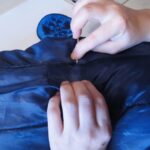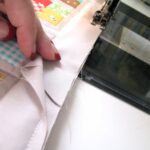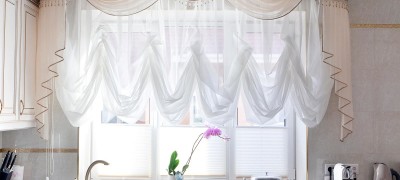Features and DIY transformer blankets
While waiting for the baby, mothers often collect a package of things for discharge themselves. The most convenient item for a baby will be a transformer blanket. In it, the newborn will feel comfortable: freely move the arms and legs during sleep. An invention combining 2 in one will warm the baby on a walk. If the apartment is cool, a handy envelope turns into a blanket in a few moments. A quality accessory is easy to sew on your own.

Characteristics and advantages of a plaid-transformer
A blanket envelope performs several functions at once.
- In the unfolded state: you can use it in an open stroller, sled, when the baby grows up; cover the baby in the crib when it is cold indoors; lay out on the floor for crawling.
- Folded - quickly prepare your baby for a walk.
The transformer has a simple design, the baby will be protected from wind and cold. The hood covers the eyes from the sun. The baby is less capricious during the collection on the street or in the clinic. Plaid in the wardrobe of babies replaces overalls, many crumbs do not like restrictions on freedom of movement. Manufacturers offer several options for the transformer: with a zipper, buttons, with ribbons or buttons, additional pockets on the outside.

Important! The models are very practical, they are used until the baby reaches two years old, sometimes longer. It is convenient to take them with you on the road, when the baby no longer needs a carrying bag. You can cover your child in the car seat.
Features of choice
Transformers blankets for a newborn are classified by seasons. When they choose ready-made models, they immediately figure out what time of year they will have to walk:
- Winter options differ in the type of insulation. Sheepskin can withstand up to -25 ° С, sintepon -7 ... 10 ° С. In regions where there is no severe frost, demi-season models are often chosen for winter.
- Spring and autumn are designed for temperatures from -5 ° C to + 10 ° C. For such modifications, attention is paid to the outer layer. It should be waterproof, windproof, not too dirty.
- Summer modifications are often made with a lining of cooling natural materials: cotton twill, silk, and flax that absorbs moisture well.
Note! If the baby catches two seasons, you can make an envelope blanket with changing insulation, such as a duvet cover. A zipper is sewn in from the bottom or buttons are made so that, if necessary, various insulation materials are inserted inside.
Is it possible to do this with your own hands
Every mother can sew a transforming blanket for a baby, it's not difficult. It is enough to be able to use a sewing machine, have basic cutting and sewing skills. Below is a detailed step-by-step instruction, but for now it is necessary to prepare materials for making an envelope.
Patterns and sizes
The sizes depend on the characteristics of the child. For babies up to 3 months old, foldable blankets with a format of 80x80 cm are sewn. Up to 75 cm tall, a transformer of 90x90 cm is recommended. Universal dimensions are 90x85.The pocket is cut in the shape of a trapezoid 25 cm high, the side for the elastic is 50-55 cm, the lower side is no more than 45 cm.
Ready-made patterns are easy to find in the public domain or do it yourself, taking into account the growth and completeness of the crumbs.
Required inventory for crafting
In addition to tailoring tools and fabrics, you will need
- zippers, one detachable, 55 cm long, the other short, 15–20 cm for the hood;
- elastic band, it will come in handy when pulling up the edge of the leg pocket;
- oblique inlay, it is selected to match the main color or contrasting color.
For sewing, hypoallergenic materials are chosen that dry quickly, wash without problems. For demi-season options, variegated colors are desirable, on which accidental pollution is not visible.
The main fabric can be dense, the lining fabric is pleasant to the touch and soft. For winter and demi-season options, fleece, flannel, knitwear are recommended. Velvet, plush, raincoat fabric, drape, cashmere are sewn on top.
Important! For decoration, it is better to choose removable brooches, sew-on accessories or bright ready-made stripes. Ruches, bows get dirty quickly and look untidy.
The choice of filler and sealant
Any materials are more suitable for insulation:
- Wool is made in several layers. You can use the edges of an old blanket. It is difficult to fill by hand. Factory options with wool have a long service life, they are passed on to other babies.
- Natural fur in winter models can be sewn on instead of lining. Sheepskin, mink, chinchilla are recommended.
- Down is another traditional filler, but it is a factory-made option.
- Sintepon is the best choice. Affordable and lightweight insulation, it is laid, if necessary, in several layers.
Step-by-step sewing instructions
When moms make a transformer on their own, it is important to follow the sequence of operations correctly:
- When cutting fabrics, all the details are immediately cut out: top, lining, insulation. For convenience, it is better to immediately lay the layers on top of each other. Pin around the edges with pins, then cut with a tailor's scissors. A pocket is cut out in the same way. Both sides are made of lining fabric.
- First, we attach the insulation to the outer shell around the entire perimeter. It is advisable to strengthen the edges, sew the corners several times.
- Sew the details of the pocket along the long edge. We turn it out, iron it if necessary. Fleece, flannel do not need such processing.
- Sew the drawstring 2–3 mm wider than the prepared elastic band, so that there is a good tightening.
- When the trapezoid is pulled up to a square, the pocket is secured to the lining. The edges are bent inward, the excess is immediately cut off. A double seam is made so that there are no raw edges inside.
- Sew the side edges of the lining to the finished outer layer. We turn it out, bend the bottom edge neatly, sew.
- First, sew on the top one-piece zipper for the hood. To do this, it must be unfastened. We process the top of the zipper well, strengthen the ends.
- We begin to sew the detachable zipper from the bottom, on both sides.
- We sew the edge with an oblique inlay.
Note! It is important that the zipper is on the outside when unfolding the transformer. Then the zipper teeth will not interfere with the baby during sleep, when you have to use the unfolded transforming blanket.
Correct use
The Transformer is essential in the first months of a baby's life. It is usually prepared for discharge from the hospital. The blanket is laid flat on the changing table. First, the baby's legs are placed in the pocket. Then the top zipper is closed and the hood is formed. Finally, connect the main zipper on the envelope blanket. The bottom is bent outward so that the legs do not blow, they are covered with several layers of the blanket.

Caring for textiles is quite simple. When choosing a washing mode, the type of insulation is taken into account. The growth of children is individual, some kids are ahead of their peers.Premature babies, on the other hand, lag behind. The transformer is matched to the size so that the newborn or newborn feels comfortable.

Although manufacturers offer a huge selection of envelopes, their own transformer blankets do not lose their relevance.
Multifunctional, bright, comfortable and practical products, easy to sew, wash. You can use them instead of a blanket and for swaddling a baby for a walk.
Video: how to sew a winter transforming envelope for a baby


























